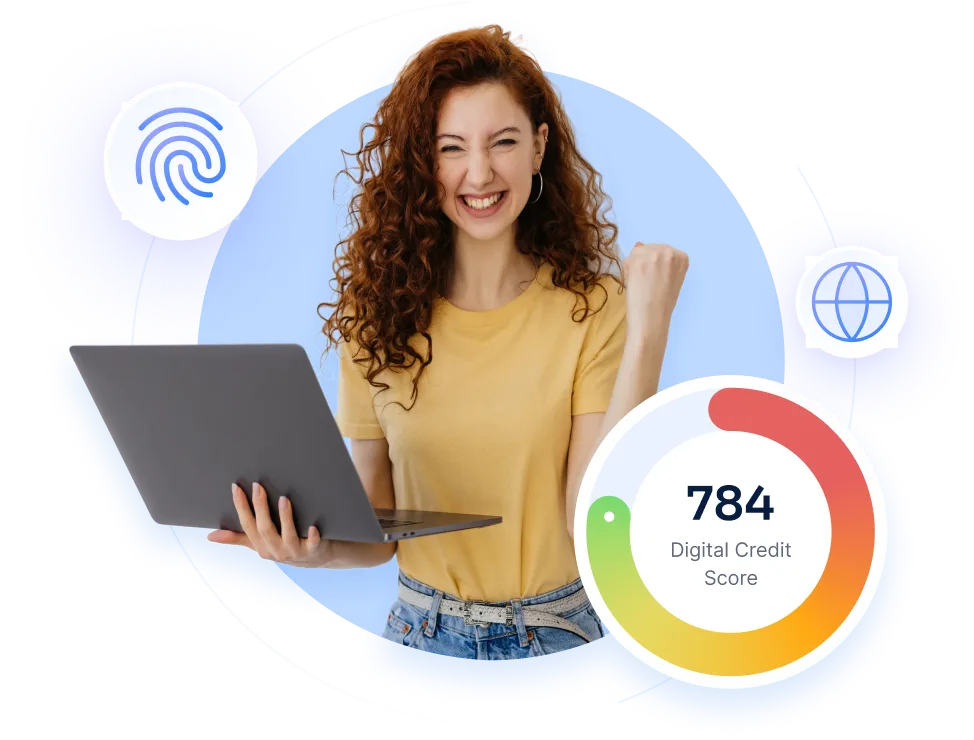Learn the guide on how to enrich credit scorecards with alternative data.

To stay competitive, modern credit institutions must continuously reassess their scoring models.
Traditional credit scoring considers only socio-demographic and financial information about the consumer. The customer provides the first type of information during the loan application process. The second can be obtained from databases of other lending institutions and credit bureaus.
Such an approach to lending is not always justified. Traditional sources provide a relatively limited set of data. The situation has fundamentally changed with the introduction of innovative technologies, such as AI and ML.
Using digital solutions based on these technologies allows combining traditional and alternative data. This helps create the most comprehensive picture of a potential borrower and improves overall credit risk evaluation.

Alternative data is information that lending institutions use to assess the creditworthiness of potential borrowers. For example, utility or rental payments, mobile phone usage, and any other digital footprint activities.
In our progressive world, around 3 billion people remain "credit invisible." Issuing credit to them using a traditional credit scoring model is impossible.
Lenders can reach consumers with no credit history by using alternative data.
To illustrate the benefits of using alternative data in credit scoring, I would like to share research by FICO, an analytics software company.
FICO conducted a study that confirmed the value of incorporating alternative data sources into risk models for lending.
While traditional credit models primarily rely on application data or credit bureau scores, this study explored the addition of alternative data in predicting credit risk.
The goal was to analyze both traditional and alternative data for the personal loan portfolio. It turned out that traditional data had more value than alternative data.
FICO was able to produce a more powerful score model by combining the traditional and alternative data characteristics. You can see it in the FICO’s diagram below.

To incorporate alternative data into a scoring model, a lender needs to go through several stages:
Evaluating scoring model performance is essential for implementing effective banking origination risk solutions.
After completing all these stages, you can be confident that you are using an optimal scoring model.

The use of alternative data by lending organizations may present certain challenges. Let's explore them in more detail.

RiskSeal's credit scoring model constantly improves, using a wide variety of data. We not only consider standard credit metrics but also include unique factors like trust scores.

We regularly update our platform to stay accurate and relevant, adapting to new economic trends and consumer habits.
By integrating this model, scorecards are enriched with diverse, real-time data, leading to better credit assessments.

Download Your Free Resource
Get a practical, easy-to-use reference packed with insights you can apply right away.

Download Your Free Resource
Get a practical, easy-to-use reference packed with insights you can apply right away.




What types of alternative data does RiskSeal provide to lending organizations?

RiskSeal provides lending organizations with a variety of alternative data types: online behavior, social footprint, verification of email and phone number authenticity, and more.
How do the data types RiskSeal provides enhance credit scoring models?

RiskSeal enhances credit scoring models by integrating a broader range of data types. The solution introduces a digital credit score that considers online behavior and presence.
We offer a more complete view of an individual's creditworthiness, capturing aspects that traditional financial data might miss. By including these digital dimensions, credit scoring becomes more holistic and more accurate in assessing risk.
What challenges might lenders face when integrating alternative data into their credit scoring models?

Lenders face challenges in selecting relevant and reliable data sources, ensuring ethical data use, interpreting complex models accurately, maintaining data quality, and managing resource costs.
Addressing these challenges can help lenders improve their decision-making and provide better outcomes for their customers.
Can small lenders or startups use alternative data in credit scoring?

Yes, small lenders or startups can use alternative data in credit scoring. It may be more cost-effective for them than relying solely on traditional data.
The use of alternative data allows small lending organizations to quickly assess the creditworthiness of potential borrowers.
Can alternative data completely replace traditional credit data?

Alternative data should be used together with traditional data for optimal results. This approach will create a complete borrower profile.
Alternative data serves more as an additional source of information, especially in cases where individuals have limited or no credit history. It complements traditional credit data rather than replacing it entirely.
How is AI used in analyzing alternative data for credit scoring?

In credit scoring, lenders use predictive analytics – an innovative technology based on Artificial Intelligence. It involves Machine Learning algorithms that analyze information about a borrower. It helps lenders get valuable insights beyond traditional metrics, enhancing their decision-making about borrower’s creditworthiness.